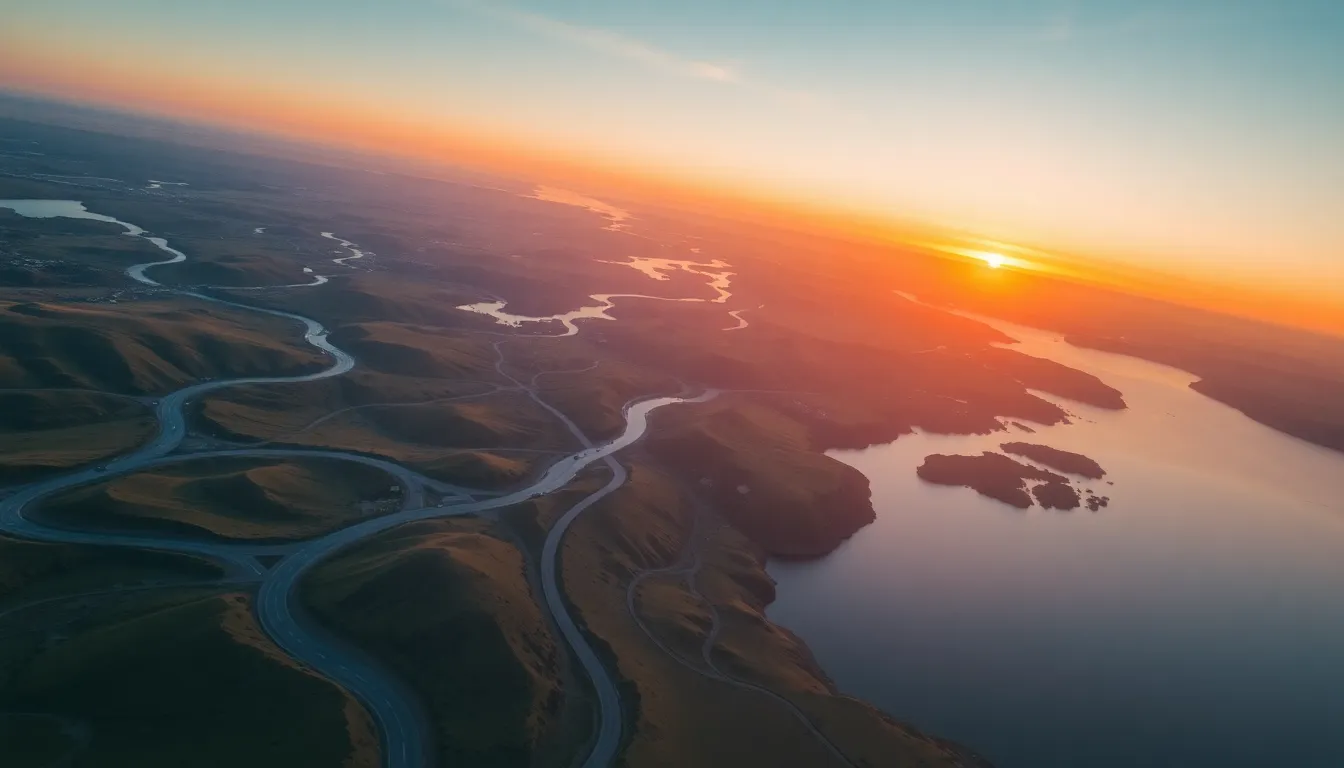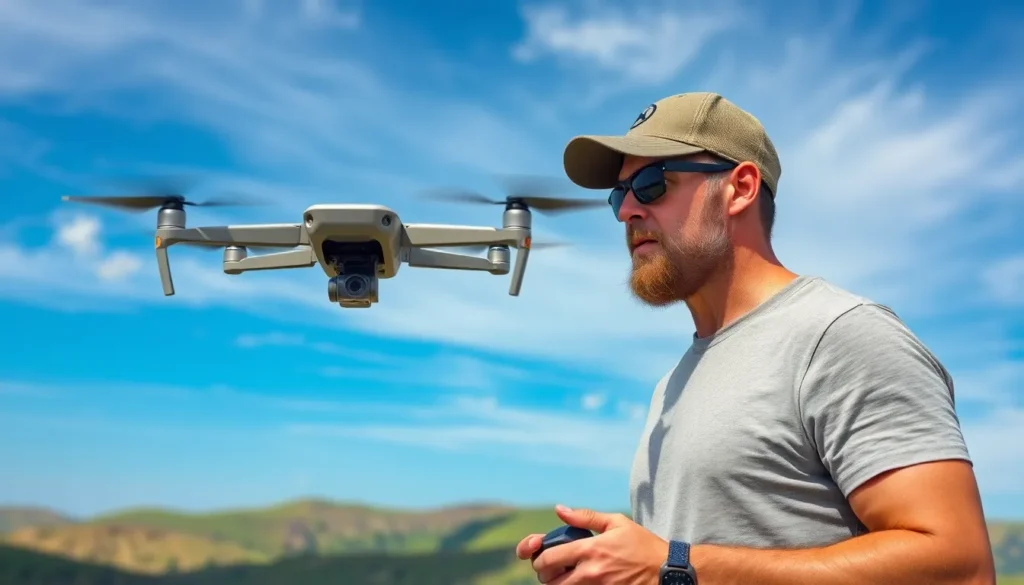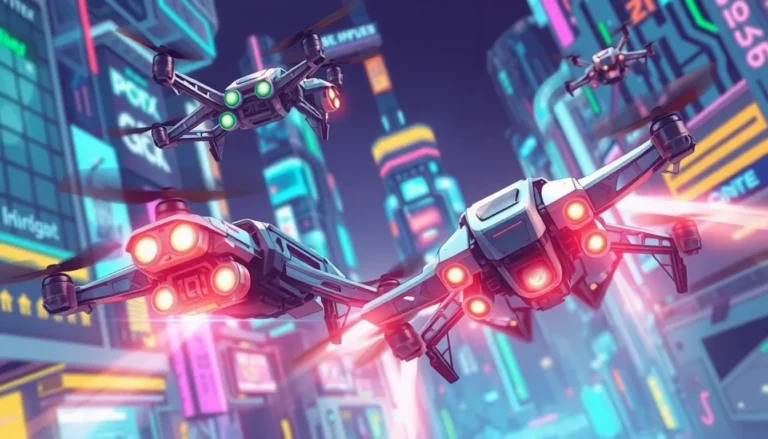Table of Contents
ToggleDrones have taken the photography world by storm, and for good reason. With a bird’s-eye view that can make even the most mundane backyard look like a scene from a blockbuster movie, it’s no wonder everyone wants to get in on the action. But before you launch your flying camera into the wild blue yonder, there are a few tips and tricks to ensure your shots are Instagram-worthy and not just a collection of blurry specks in the sky.
Essential Drone Photography Tips
Capturing stunning aerial photographs requires knowledge of your drone and the right camera settings. Applying essential tips enhances the quality of images significantly.
Understanding Your Drone’s Capabilities
Familiarization with the drone’s specifications enhances photographic outcomes. Knowing maximum flight altitude aids in selecting the right shooting angles. Battery life determination ensures sufficient power for extended sessions. Flight modes provide options for achieving desired effects, like follow-me or waypoint navigation. Learning about camera features, such as gimbals or zoom capabilities, contributes to higher-quality images. Experimenting with drone controls fosters better stability and maneuverability during flights.
Choosing the Right Camera Settings
Camera settings play a crucial role in drone photography. Adjusting shutter speed balances motion and image sharpness effectively. Setting the ISO to a lower number minimizes grain, especially in bright conditions. Selecting the right aperture optimizes depth of field, enabling captivating backgrounds. Using manual white balance guarantees accurate color reproduction in varying lighting. Setting the appropriate resolution allows for larger prints without quality loss. Keeping the frame rate steady aids in producing smooth video footage, enhancing the final product.
Composition Techniques for Stunning Shots

Composition plays a critical role in drone photography, enhancing the visual appeal of images. By applying various techniques, photographers can create unforgettable aerial shots.
Rule of Thirds in Drone Photography
Applying the rule of thirds can significantly improve image composition. Photographers should imagine dividing the frame into nine equal parts, using two horizontal and two vertical lines. Key elements should align with these lines or their intersections. This technique draws viewers’ attention to focal points, creating balance in the image. For example, positioning a sunset along the horizon line can add depth and interest. It’s essential to experiment with different placements, ensuring the subject doesn’t dominate the frame but complements the overall scene.
Leading Lines and Perspectives
Utilizing leading lines enhances the viewer’s journey through the image. Photographers can leverage natural lines, such as roads, rivers, or paths, to guide the eye toward the subject. Striking perspectives can elevate photographs, conveying depth and dimension. Elevating the drone at various altitudes delivers unique viewpoints, transforming ordinary landscapes into captivating visuals. Photographers should also consider the angle of capture; tilting or rotating the drone can introduce unexpected lines and shapes, enriching the composition.
Mastering Drone Flight Skills
Mastering flight skills is crucial for capturing stunning aerial photography. Practicing essential techniques leads to improving overall photographic quality.
Pre-Flight Checks and Safety Tips
Conducting pre-flight checks ensures equipment functions properly. Inspect drone batteries for sufficient charge before taking off. Verify GPS and compass calibrations for optimal navigation accuracy. Examining propellers for damage helps maintain flight stability. Familiarity with local regulations promotes safe flying and avoids penalties. Carrying a checklist simplifies ensuring all vital steps are completed. Always assess weather conditions to avoid unexpected challenges, such as strong winds or rain.
Maneuvering Techniques for Dynamic Shots
Utilizing smooth, gradual movements produces visually appealing images. Employing yaw, pitch, and roll builds dynamic perspectives. Adjusting altitude during flight enhances the depth of each shot. Incorporating banking turns adds excitement to aerial visuals. Experimenting with speed variations impacts how a scene is portrayed. Keeping the drone within line of sight fosters better control during maneuvers. Applying these techniques results in more captivating and engaging drone footage.
Post-Processing Your Drone Photos
Post-processing significantly enhances drone photos, allowing photographers to bring out the best in their images. Various editing techniques can transform raw shots into polished visuals.
Editing Basics for Drone Images
Start by adjusting exposure to correct brightness. Brightening shadows and darkening highlights can add depth. Utilize cropping to improve composition and focus on key elements. Color correction is vital; enhancing saturation and vibrancy can make images pop. Sharpening helps bring out fine details, ensuring clarity. Lastly, applying noise reduction minimizes graininess, especially in lower light conditions.
Recommended Software for Enhancements
Photoshop dominates as a comprehensive editing tool, offering extensive features for detailed adjustments. Lightroom excels in batch processing, enabling quick edits without sacrificing quality. For those seeking user-friendly options, Skylum Luminar stands out with AI-powered tools that simplify enhancements. Capture One provides excellent color grading capabilities, ideal for professional photographers. Additionally, free options like GIMP and Darktable offer robust functionalities for budget-conscious users.
Drone photography opens up a world of creative possibilities. By mastering the technical aspects and applying effective composition techniques, photographers can significantly enhance their aerial shots. Understanding the drone’s capabilities and ensuring safe flight practices are crucial for capturing stunning visuals.
Post-processing plays a vital role in bringing out the best in each image. With the right editing tools and techniques, photographers can transform their photos into breathtaking works of art. By continually experimenting and refining their skills, they can elevate their drone photography to new heights, creating captivating images that stand out in any portfolio.







